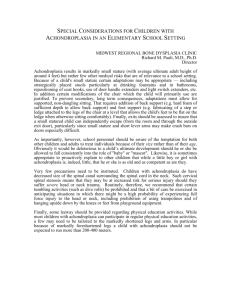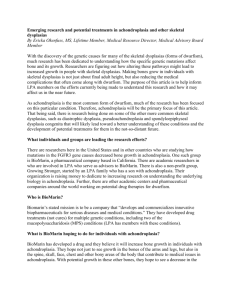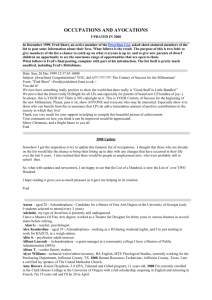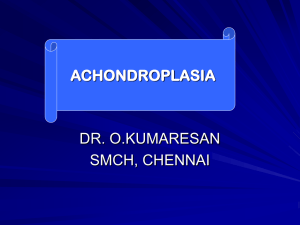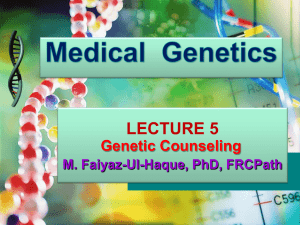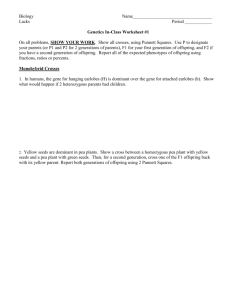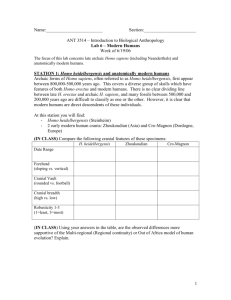The gene for achondroplasia is liked to the chromosome 4p16
advertisement
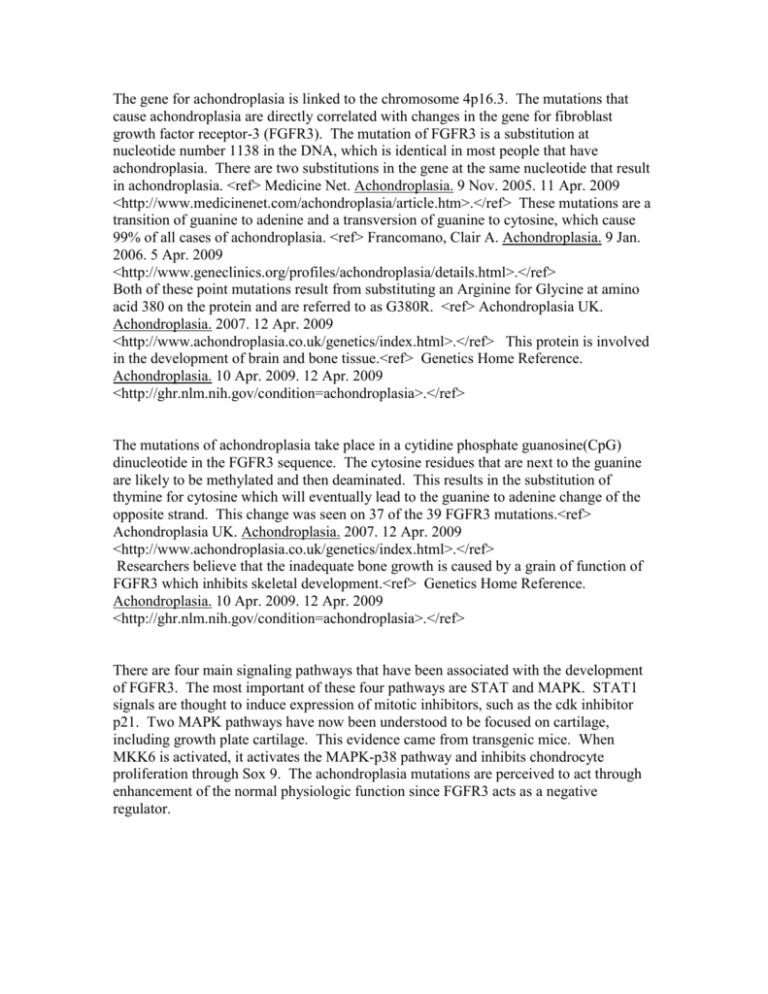
The gene for achondroplasia is linked to the chromosome 4p16.3. The mutations that cause achondroplasia are directly correlated with changes in the gene for fibroblast growth factor receptor-3 (FGFR3). The mutation of FGFR3 is a substitution at nucleotide number 1138 in the DNA, which is identical in most people that have achondroplasia. There are two substitutions in the gene at the same nucleotide that result in achondroplasia. <ref> Medicine Net. Achondroplasia. 9 Nov. 2005. 11 Apr. 2009 <http://www.medicinenet.com/achondroplasia/article.htm>.</ref> These mutations are a transition of guanine to adenine and a transversion of guanine to cytosine, which cause 99% of all cases of achondroplasia. <ref> Francomano, Clair A. Achondroplasia. 9 Jan. 2006. 5 Apr. 2009 <http://www.geneclinics.org/profiles/achondroplasia/details.html>.</ref> Both of these point mutations result from substituting an Arginine for Glycine at amino acid 380 on the protein and are referred to as G380R. <ref> Achondroplasia UK. Achondroplasia. 2007. 12 Apr. 2009 <http://www.achondroplasia.co.uk/genetics/index.html>.</ref> This protein is involved in the development of brain and bone tissue.<ref> Genetics Home Reference. Achondroplasia. 10 Apr. 2009. 12 Apr. 2009 <http://ghr.nlm.nih.gov/condition=achondroplasia>.</ref> The mutations of achondroplasia take place in a cytidine phosphate guanosine(CpG) dinucleotide in the FGFR3 sequence. The cytosine residues that are next to the guanine are likely to be methylated and then deaminated. This results in the substitution of thymine for cytosine which will eventually lead to the guanine to adenine change of the opposite strand. This change was seen on 37 of the 39 FGFR3 mutations.<ref> Achondroplasia UK. Achondroplasia. 2007. 12 Apr. 2009 <http://www.achondroplasia.co.uk/genetics/index.html>.</ref> Researchers believe that the inadequate bone growth is caused by a grain of function of FGFR3 which inhibits skeletal development.<ref> Genetics Home Reference. Achondroplasia. 10 Apr. 2009. 12 Apr. 2009 <http://ghr.nlm.nih.gov/condition=achondroplasia>.</ref> There are four main signaling pathways that have been associated with the development of FGFR3. The most important of these four pathways are STAT and MAPK. STAT1 signals are thought to induce expression of mitotic inhibitors, such as the cdk inhibitor p21. Two MAPK pathways have now been understood to be focused on cartilage, including growth plate cartilage. This evidence came from transgenic mice. When MKK6 is activated, it activates the MAPK-p38 pathway and inhibits chondrocyte proliferation through Sox 9. The achondroplasia mutations are perceived to act through enhancement of the normal physiologic function since FGFR3 acts as a negative regulator. (GENE) Genetics Home Reference. Achondroplasia. 10 Apr. 2009. 12 Apr. 2009 <http://ghr.nlm.nih.gov/condition=achondroplasia>. Horton, William A. Iceberg C-21 Breaks off Shackleton Ice Shelf. 11 Nov. 2008. 10 Apr. 2009 <http://www.gghjournal.com/volume22/4/featureArticle.cfm>. Achondroplasia UK. Achondroplasia. 2007. 12 Apr. 2009 <http://www.achondroplasia.co.uk/genetics/index.html>. Francomano, Clair A. Achondroplasia. 9 Jan. 2006. 5 Apr. 2009 <http://www.geneclinics.org/profiles/achondroplasia/details.html>. Medicine Net. Achondroplasia. 9 Nov. 2005. 11 Apr. 2009 <http://www.medicinenet.com/achondroplasia/article.htm>.
